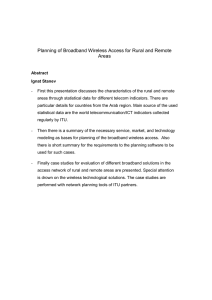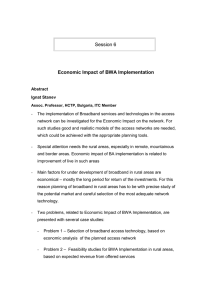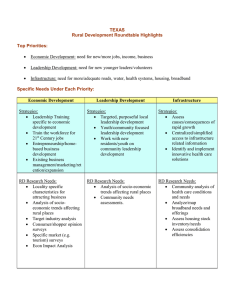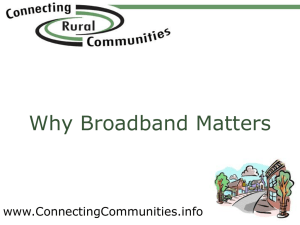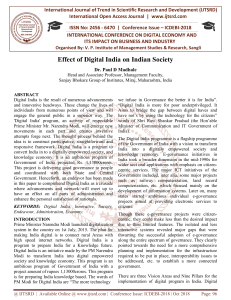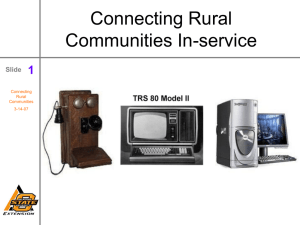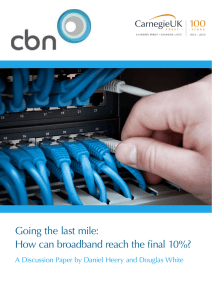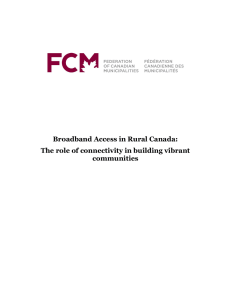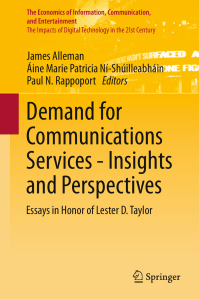DIGITAL DIVIDE Laura Laham Grace Thornton Jason Chen
advertisement
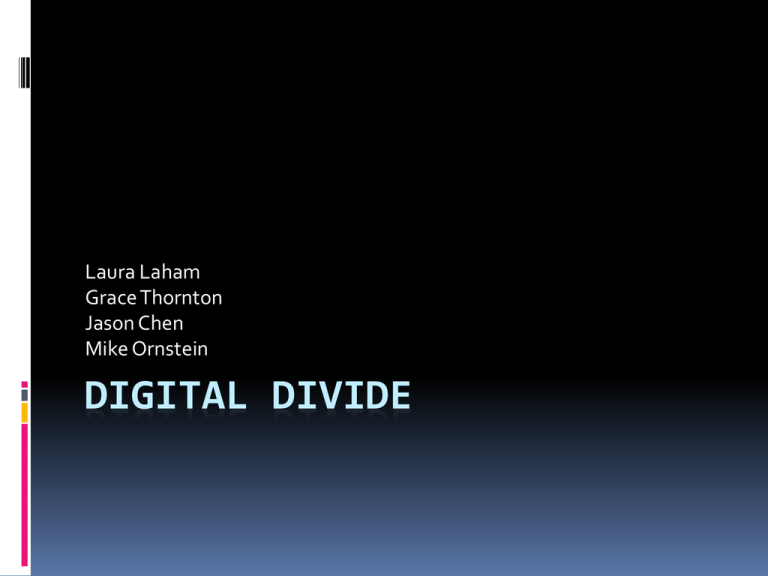
Laura Laham Grace Thornton Jason Chen Mike Ornstein DIGITAL DIVIDE Introduction Digital divide: the gap between people with effective access to digital and information technology and those with very limited or no access at all. Includes the imbalances in physical access to technology as well as the imbalances in resources and skills needed to effectively participate as a digital citizen. In other words, it is the unequal access by some members of society to information and communication technology, and the unequal acquisition of related skills. Introduction (cont.) The term is closely related to the knowledge divide as the lack of technology causes lack of useful information and knowledge. Division based on gender income race groups locations Global digital divide: differences in technology access between countries or the whole world. General Information Canada: 73% of Canadians aged 16 and older went online at least once in the prior year Up compared to 68% in 2005. Rural vs. Urban: 65% in rural areas regularly access the internet. 76% in urban areas. 91% of people making more than $91,000/year regularly used the Internet, 47% of people making less than $24,000. This gap has shrunk slightly since 2005.[27] China: Internet population increased by 20% from 2005 to 2006 19% of Chinese people have access to the Internet Digital divide is growing due to factors such as insufficient infrastructure and high online charges General Information (cont.) Europe: Found to be primarily a matter of age and education. Young or educated use the internet more than old or uneducated. Digital divide is also higher in rural areas The presence of children in a household increases the chance of having a computer or Internet access Small businesses are catching up with larger enterprises when it comes to Internet access. United States: 55% of adult Americans have broadband Internet connections at home “Up from 47% who had high-speed access at home last year at this time [2007]”. This increase of 8% compared to the previous year’s increase of 5% suggests that the digital divide is decreasing Findings show that low-income Americans’ broadband connections decreased by 3%. Positive Aspects Internet and Blogs Advancement in collective thought, communication, and creativity Advances society in democratic ideals Creates programs and organizations that help underprivileged communities and countries advance technologically One Laptop Per Child Project E-rate program, and USAID IGADD (Investor Group Against Digital Divide) Promotes competition which fosters new technology Criticism Why use the internet? A matter of ignorance. Many people who don't use computers on a regular basis do not understand why people who do use it need to use it in the first place. Can you hear me now? Some people argue that poor wifi reception in more rural locations add to the digital divide between those who live closer and further from cities and more technologically savvy areas. It doesn't exist! The Digital Divide is often said to be a perceived gap. With the development of technology, computers will become more friendly for individual use and there won't be a gap any longer. Opinion Digital divide is growing and shrinking Current policies that foster shrinkage: One Laptop Per Child, IGADD, etc. More of these! Current policies that are increasing the divide: Broadband gouging- cost Urban priority Ignorance- disregard for the existence of a divide Lack of education Less of these!
